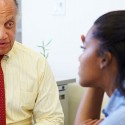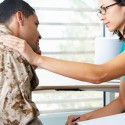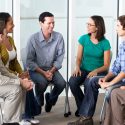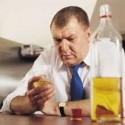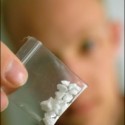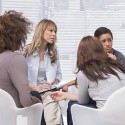Recovery and Relapse – Understanding the Cycles
Like most things recovery and relapse is cyclic. Unfortunately, many addicts get trapped in this cycle. Although each person is different, they all face the same problems, fears, and dangers. This is why group therapy works for some people. To an addict knowing that they are not alone is an incredible boost when they feel that they are about to relapse. Knowing how to break the cycle of recovery and relapse also helps a user to understand what is happening and how to prevent it.
For help finding treatment call 888-646-0635Who Answers? toll free.
What is the Relapse Cycle?
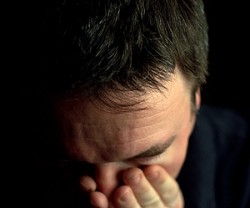
Some people who achieve recovery end up using substances again, which is called a relapse.
The relapse cycle is one of constant recovery and then slipping back into the drug use. Many people wind up in this cycle. According to the National Institute on Drug Abuse, the relapse rate for drugs and alcohol is similar to that of any other disease. This includes diseases like asthma and diabetes. There are five stages in the cycle of relapse.
- Happy without change – in this stage an addict is happy being an addict. They do not notice their life falling down around them. They do not see the problems with what they are doing and do not realize how badly they are addicted. At this point, they have no desire to change their behavior until something that shows them their behavior is destroying their life.
- Contemplating a change – in this stage an addict is seeing what the drugs do to them and others around them. A user starts to realize that the drugs are the issue and they think they might need to stop. They might even look into rehabs or other treatment options. In the contemplating stage, they are not quite ready to change.
- Preparing to change – in this stage users are deciding which method of treatment they want to use. They might ask around about what works and what does not. In the preparation stages, they realize that they are ready to change.
- Changing – in this phase they are ready and willing to change. They have figured out their strategy and are taking steps to actively participate in their recovery. They attend meetings, they attend counseling, and seek the advice of their doctor on a regular basis.
- Maintaining the change – in this phase they are continuing counseling and other treatments. They are maintaining the things that they learned during the changing process and are doing their best to avoid triggers and other incidents of abuse. Unfortunately during this phase lies the highest chance of relapse. When all of the change is finished and they are comfortable, an addict starts to think they are capable of handling the drug or alcohol use.
Unfortunately, this is usually where the cycle begins again. When things are comfortable again after they have changed their life and gotten away from their drug of choice, they start to relax. Although they can relapse at any point, shortening the cycle, this is the point where relapse is most likely.
What Leads to Relapse?
Many things can lead to relapse. Stress at work, stress at home, forgetting what the drug does, and depression or loneliness are just a few things that can cause a relapse. It is important to remember that relapse is not necessary their fault, it is difficult to completely overcome drug or alcohol addiction. Sometimes it can be as simple as a memory of how happy they were while using or an old friend who uses coming back into their life. Many things can trigger a relapse and it is impossible to predict what those triggers are.
Call 888-646-0635Who Answers? toll free anytime for help finding treatment for addiction.
Types of Relapse
There are three different types of relapse. Almost every addict exhibits all three of them, the types are:
- Physical – they physically are using again. They start small and then the addiction grows until it is uncontrollable again.
- Mental – they are thinking about using again. The addict is fixated on it and thinks of little else. This is where they plan the how they will relapse.
- Emotional – they are moody, irritable, and frustrated. The cravings are intense and they become defensive about everything. The good habits they have acquired in treatment stop.
These types of relapse move in stages until the addict is using again. They might not go through all of the stages before they start using again but relapse usually starts with emotional breakdown. The emotional relapse is a critical time for a recovering addict. Since most successful recovery programs depend on a solid support structure, when that support structure crumbles the relapse recovery cycle escalates. Without the support, structure, and habits they acquired during treatment, they are doomed to start using again.
Preventing a Relapse
According to the Substance Abuse and Mental Health Service Administration, the best way to prevent relapse is to make sure that an addict’s support system is intact. This is a combined effort between the addict, therapists, counselors, medication, family, and friends. In order to prevent a relapse a person needs to recognize the cycle of relapse. They also need to recognize the signs that they are slipping into a relapse before it happens. With all of this, it is important to remember that relapse can happen to anyone. It is not the end of the world and breaking the cycle of recovery and relapse is possible with the help of family, friends, doctors, therapists, and rehab treatment centers. Those that you left when you relapsed are still there waiting to help. For help finding treatment call 888-646-0635Who Answers? toll free.

